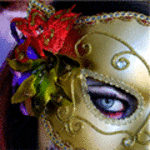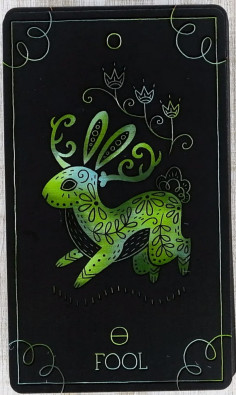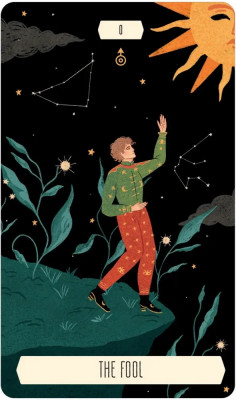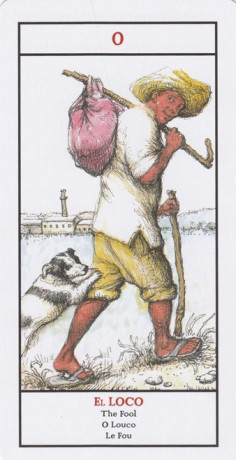Renaissance Tarot — Таро Ренессанса
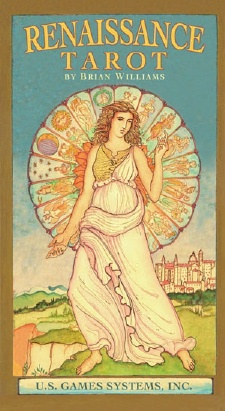
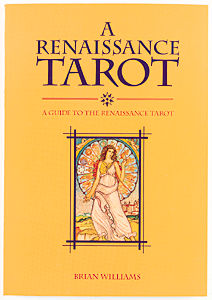
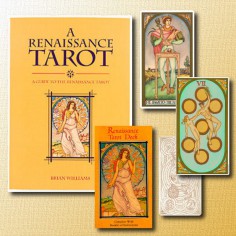
Характеристика Renaissance Tarot — Таро Ренессанса
Автор: Brian Williams
Художник: Brian Williams
Издательство: US Games
Производство: США
Состав: 78 карт + инструкция на англ. языке
Книга к колоде: A Renaissance Tarot: A Guide to the Renaissance Tarot (U.S. Games Systems, 1997 год, 194 стр, англ. язык)
Язык карт: английский
Размер карт: 70 × 126 мм
Год: 1988, 1994, 2013
ISBN: 978-0-88079-307-0, 978-0880795456 книга, набор 1-57281-033-5
Традиция: Смешанная (Уэйт / Марсель)
Младшие арканы: иллюстрации
Масти: жезлы, чаши, мечи, пентакли
Карты двора: Паж, Рыцарь, Дама, Король
Нумерация: Шут 0 Сила 11 Правосудие 8
Категория: Средневековье/Ренессанс, древнегреческая мифология
Другие колоды Brian Williams: Light and Shadow Tarot — Таро Света и Тени, Minchiate Tarot — Миниатюрное таро Брайана Уилльямса, PoMo Tarot, Таро Корабль Дураков — Ship of Fools Tarot
Таро Ренессанса — это великолепные художественные работы со штрихами золота. Все двенадцать божеств Олимпа и другие греческие и римские боги и полубоги запечатлены в Старших Арканах. Младшие Арканы в колоде Таро Ренессанса состоят из числовых и придворных карт, на которых изображены миниатюрные сцены из греческой мифологии. (Эклектик)
Изумительная художественная работа Брайана Вилльямса — Таро Ренессанса — соединяет традиционный символизм Таро с великолепием европейского Ренессанса и классической мифологией. На 22 Старших Арканах изображены боги и богини Олимпа и полубоги античности. Надписи на картах на Английском и Итальянском. В инструкции к картам каждая из карт сопоставлена с Греческим и Римским божеством и его атрибутами. Например, Дурак связан с Дионисом/Вакхом, а Маг с Гермесом/Меркурием. Четыре масти Младших Арканов представлены четырьмя классическими циклами мифов с взаимосвязанной системой планет, созвездий, сезонов и элементов. Мечи связаны с Ахилесом, Жезлы с Гераклом, Чаши с Купидоном и Психеей, а Монеты с Персефоной. Великие города итальянского Возрождения нашли свое отражение в картах Двора. На рубашке карт изображена мандала, составленная из символов четырех мастей и четырех элементов. Брайан Вилльямс сумел собрать воедино богатую мозаику картин и изображений эпохи Возрождения. (Точка фортуны)
Где купить Renaissance Tarot — Таро Ренессанса
*Ссылки на магазины показывают, что там была замечена данная колода.
Обзор с зарубежных сайтов
Обзор Renaissance Tarot — Таро Ренессанса
МБК значения: Renaissance Tarot — Таро Ренессанса
Скачать оригинальный буклет Renaissance Tarot
Renaissance Tarot
The Fool
The Fool is dressed in an elaborate slashed costume of a sixteenth-century court jester. The plumes in his hair signify folly, and the staff he holds is surmounted with grapes and a tiny skull, symbols of Bacchic abandon and terror. The Fool’s companion deity is, in fact, Dionysus (Bacchus), and he is accompanied by the leopard that Dionysus brought back from his wandering revels in India. A lily of the valley flowers at The Fool’s feet, symbolizing blithe innocence and simplicity («Consider the lilies of the field, how they grow, they toil not, neither do they spin» Matthew 6:28) and the advent of spring. The Fool signifies rebirth and new beginnings, as does the constellation Aries; the pagan god Dionysus who was dismembered and made whole again, as his grape vine is pruned to be renewed again in spring; and the Christian savior, whose resurrection is symbolized by the lily and whose feast, like those of Dionysus and Demeter of Eleusis, is celebrated with the grape and grain.
The Magician
The Magician, like his companion deity Hermes (Mercury), wears a winged hat and holds a snake entwined staff. The crane was scared to Hermes and also the Egyptian god Thoth, inventor of language and scribe to the gods. The flock pattern of migrating cranes inspired Hermesto invent the first Greek letter, alpha. The Magician stands behind a three-legged table on which rests several basic forms symbolizing the world of matter: a cube, a sphere, a pyramid and a polyhedron with twelve faces. As the personage after the instinctual impulse of The Fool and before the spiritual sublimity and intellectual mastery of the succeeding cards, The Magician flies between the inspiration of Dionysus and the expression of Apollo.
The High Priestess
The Priestess, dressed like a Botticelli goddess with hieratic touches, holds a scroll of knowledge and a lotus flower whose leaves are eyes. The eyes are attributes of Saint Lucy. «Holy Light», an aspect of celestial wisdom. Her companion deity is Demeter (Ceres), goddess of fertility, whose accompanying symbol is the cat, a creature that from Egyptian times has signified serene feminine wisdom.
The Empress
The Empress holds a fan of worldly pleasure and the orb of sovereignty. Hera (Juno) and the peacock accompany her. The queen of the pagan gods gave the hundred eyes of the vanquished Argus to the foul to adorn its tail, and adopted the bird as her attribute. Later, Mary the Christian queen of heaven inherited the symbol of the peacock and its «eyes» became the all seeing eyes of providence.
The Emperor
The Emperor wields a staff of rule and wears an ermine-trimmed cloak. Flanking him are Zeus (Jupiter; Jove) holding the lightning bolts of his power as ruler of Olympus, and Zeus’s eagle. In the distance is a castle-villa.
The Hierophant
The Hierophant holds a bishop’s crook and a tiny dragon, a symbol of evil vanquished. The crook and dragon are attributes of Saint Hilary of Poitiers. He wears the papal tiara. In the upper corners are Poseidon and the horse invented by the sea god. Poseidon and his brothers Zeus and Hades drew lots for rulership of the world after the successful revolt against their parents, the Titans. Zeus won the sky, Poseidon the sea and Hades the underworld. In like manner, The Emperor holds temporal authority while The Hierophant rules the spiritual realm.
The Lovers
The Lovers hold hands under an arch adorned with Aphrodite (Venus), the goddess of love, with her son Eros (Cupid), and the doves that draw the goddess’s chariot.
The Chariot
An armored man is drawn by the light horse and dark horse of Plato’s Symposium. The symbolize noble and ignoble impulses. The god of war, Ares (Mars), and Ares’ hawk accompany the man. Ares was Aphrodite’s lover and the two formed allegorical compliments to each other, Their adulterous liaison symbolized the feminine force of peace subduing the brutal war or alternately, the enervating voluptuousness of woman seducing man into inactivity.
Strength
Herakles (Hercules), rendered on the style of Michelangelo, pries apart the jaws of the lion of Nemea. With his supreme strength, he vanquishes the animal that was impervious to weapons. The two figures of lion and hero are repeated in the upper corners.
The Hermit
A bearded man in a turban and a frayed robe holds and hourglass that glows like a lantern. The god of fire and metalworking, Hephaestus (Vulcan), and the salamander which lives in the flames of the forge, stand in the corners. Better suited to The Hermit, perhaps, would be the god of time, Kronos (Saturn). Kronos, however, was exiled from heaven with the fall of the Titans, and the honor of the card is given to Hephaestus, who, appropriately, was the least expansive of the Olympians.
Wheel of Fortune
Fortune herself stride before a wheel made of the cards of the Major Arcana. To the right, she points up to a castle like that of Urbino, Italy, and to the triumphant figure of the crest of the wheel. To the left, she points down to an abyss, toward which the small figure above plunges.
Justice
Justice holds the scale of judgment and the sword of authority. Athena (Minerva) and Athena’s scared owl accompany her. Athena is usually associated with Prudence of the four Cardinal Virtues, but one of the mysteries of the tarot is the almost universal exclusion of Prudence and the consistent inclusion of the other three Cardinal Virtues: Fortitude (Strength), Justice and Temperance. Themis, a Titaness and the goddess of Divine Justice, gives way to the Olympian Athena, goddess of rational thought and the defender of just causes.
The Hanged Man
A suffering figure is suspended by one leg below a small figure of the Titan Prometheus. As punishment for taking fire from Olympus and giving it to humanity, Prometheus was chained to a rock and a vulture was sent by Zeus, who is represented by the eagle, to devour his entrails. Like Prometheus, The Hanged Man may be suffering for some humane, brave or noble act.
Death
Death, a jaunty skeleton in a feathered cap, saluted the living and wields a scythe with which he harvests souls. At Death’s feet are a cracked mirror, symbolizing youth and beauty, a bag of coins for wealth, and a bishop’s miter and a king’s crown, for ecclesiastical and temporal power. In the upper corners are Hades, the king of the dead, and Cereberus, the three-headed hound of hell.
Temperance
A winged, angelic form mixes the liquid of one jar with another. Temperance is accompanied by the Olympian cup bearers; Herbes, who left her post to marry the newly immortal Herakles, and Ganymede, who replaced her. Ganymede was a Trojan prince whose beauty enchanted Zeus. In the form of an eagle, the god kidnapped the boy and took him to Olympus, and immortality. The story is an allegory of the human soul raised and perfected by godhead. Ganymede was also associated with the constellation Aquarius, often called the angel.
The Devil
The Devil, a horned and dragon-winged creature, stands in front of an enchained couple. The god Pan and his goat accompany him. Pan, the wild, lighthearted and slightly malicious god of the hillsides, lent the Judeo-Christian devil some of his attributes of his appearance and character.
The Tower
A prone, armored figure shields himself from the bolt of lightning that sets an anthropomorphic tower of fire. In the upper left corner, Icarus, his wings melting, falls from the sky. On the upper right, Phaeton is toppled from his father’s sun chariot by the thunder bolt of Zeus. Mentioned together by Dante in The Inferno, Icarus and Phaeton are examples of mankind flung down for hubris (overweening pride). The tower itself recalls the doomed tower of Babel of King Nebuchadnezzar and the tower that imprisoned Saint Barbara.
The Star
A nude female figure pours water from a pitcher into a body of water. A ring of stars is above her. In the corners are Astraea, the nymph sent by Zeus to bless humankind and then placed in the sky as Virgo, and her familiar, the swan.
The Moon
The moon fills the sky above a pair of music-making maidens. The goddess Artemis (Diana) and a hunting dog and stag border the card. The stag represents Actaeon, a youth who accidentally looked on Artemis bathing. He was punished by being transformed into a stag and then devoured by his own dogs. The story illustrates Artemis’s role as protector of unmarried girls. She was also patroness of childbirth. A circular temple, symbol of feminine completion, stands in the distance. In this card, Artemis not only subsumes not only Selene, the older lunar goddess, but also Hecate, the terrifying deity of night, black magic and crossroads.
The Sun
The Sun shines on a pair of singing or reading youths. The god Apollo, Artemis’s twin, reclines in the left corner. A hyacinth, named and created by Apollo in memory of he beloved friend, blooms beside the figures.
The Judgment
A triumphant figure, icongraphically the risen Christ, emerges from a sarcophagus, holding a banner and gesturing in benediction. The trumpet blowing angel Gabriel is in the upper right corner. Opposite the angel is the ancient symbol of rebirth, the phoenix. The scene carved on the tomb depicts Achilles discovered in the house of Lycomedes, representing the hero being called to his destiny.
The World
The World, the final card for the Major Arcana, portrays a nude female figure who holds a large circular garland, symbolizing the completeness and fertility of the world. In the distance, the hilltop city ringed by cliffs, much like Orvieto, extends the metaphor of The World to the Renaissance city-state and to the city of God. In the four corners are the symbols of the four evangelists: (From top right, counterclockwise) the winged bull Luke, the winged lion Mark, the eagle John, and the winged man Matthew. The four represent the dispensation in the new world of Christian tradition: the forgiveness of sins through the sacrifice of Christ. They are also the figures of the vision of Ezekiel, representing the four archangels who support the creator in glory. Lastly, they are the symbols of the four fixed signs of pagan astrology: Taurus, Leo, Scorpio and Aquarius; respectively forming the Cross of Matter, the foundation and armature of the universe.
